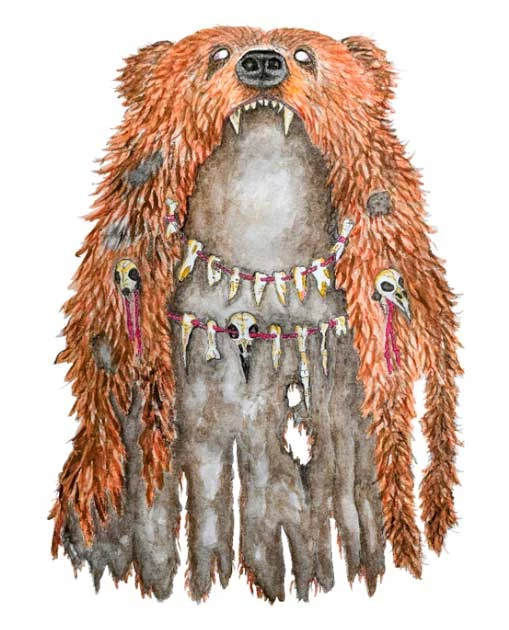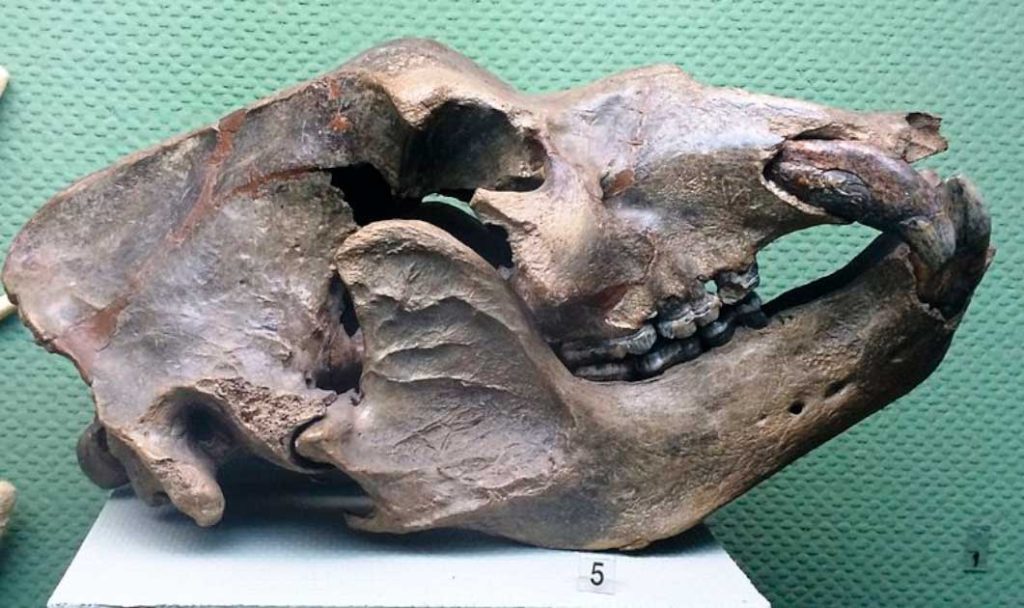Animal worship is nothing new. Cultures as geographically and structurally diverse as the Native Americans or the Pacific Northwest or the Japanese all revere animals in some form.
Similarly, the roots of such worship can be easily understood. Animals display traits in which they seem to have an advantage over humans, and those that worship that animal seek to be blessed with aspects of their physical form. The Chavin in Peru sculpted statues depicting themselves transforming into jaguars, gaining the strength, speed, agility and ferocity of the animal in the process.
But the worship of one particular animal in Europe seems to go back especially far. Bears, feared and respected for their strength and power, may have been worshipped in so-called “Bear Cults” far back into the dawn of human history, and even by human species other than our own.
Were there bear worshippers amongst the ancient Neanderthals? What can we know about their lost culture, and what did the bear mean to them?
Bear Cults Around the World
Firstly, bears are an obvious choice for cult worship. For example, bears have always existed within the cultures of the Native Americans. Bears symbolized wisdom and great strength as the bears are known to continue fighting even when they are seriously injured.
Bears also used to play a significant role in various religious ceremonies. According to the Pueblo tribes of the southwestern United States, the bears were believed to be one of the six “directional guardians”.
Indigenous groups like the Puebloan Zuni believed that bears were capable of healing people. So, bears were carved on the rocks in order to ensure the protection of the individuals. The warriors used to wear the claws of bears as necklaces with the belief that it would bring strength and power to the warrior.
- The Shaman: Spirit Guide to the Infinite?
- God and the Dawn of Man: Did Homo Erectus have its Own Religion?
Bears were similarly worshipped by the Ainu, a small group of people from several islands in the Japanese archipelago. For this group of people, the bears were very important, called “kamuy” in their language. The meaning of this term is God.

Ainu considered a number of animals as gods. However, among all the animals, bears were considered the most important. The people were of the belief that the gods disguised themselves with the fur and flesh of animals whenever they visited the face of the earth. So, the Ainu when they encountered a bear would kill and eat it, freeing the spirit of the god to return to its home in the process.
The Nivkh, a group of the indigenous ethnic group of Eastern Russia, also had a cult of bear worship, an offshoot and facet of their shamanism. According to the belief of the Nivkh, the bear is an earthly manifestation of the gods and ancestors. The local women used to capture the bears and raise them in a corral. The local women treated the bears in such a way as if they were their children.
The Nivkh bear festival, held in the deepest winter, was presided by a Nivkh shaman. In the festival, the bears were made to dress in a ceremonial costume that was specially created for them. A feast was then offered to the bear so that it would take it to the gods.
The tradition was meant to ensure that the gods showed kindness to the clans. After the banquet, the bear was killed and eaten by the people in the clan in an elaborate ceremony. It was believed that the spirit of the bear would return to the gods and bless the Nivkh people with bountiful forest. Such practices were suppressed by the USSR, and although it has been revived again in recent years the original shamanistic beliefs are long gone.
Ancient Europeans: the Root of all Bear Cults?
So it is clear that bears were an important animal, associated with gods and worshipped across the globe. But in Europe the cults may go back much farther.
Among them was the worshipping of bears by the Finns. Before Christianization in Finland, polytheistic Finnish paganism was quite popular among the people. In addition to worshipping the God of sky and thunder, the people in Finland used to respect and worship bears.
During ancient and medieval times, the people relied a lot on hunting for their survival. Among all the animals, bears were considered to be sacred. According to the beliefs of the Finns, the bears had come from the sky, and they were capable of reincarnating. So, the bears were treated with high respect by the Finns.
Whenever they killed and ate a bear, this formed a celebration known as Karhunpeijaiset. The main rationale behind the celebration was to reincarnate the soul of the bear back to the forest.
Bear worship survived also in a reduced form for the famous Viking berserk warriors. Here the crazed fighters would wear the skin of the animal, believing that they took on some of the strength and ferocity of the bear when attacking. The fact that they looked terrifying in doing so probably didn’t hurt.
The people of the Spanish and French Pyrenees also worship bears to this day. In the communes and towns of the mountainous region, a number of bear festivals are held. The Prats de Mollo, a commune in the Pyrenees region, holds the “festival of the bear” (“festa de I’os”) on February 2. It is a ritual that involved men dressing up as a bear, waving sticks, and terrorizing the people on the streets.
But, most anciently and most interestingly, bears may have been the particular animal worshipped by European Neanderthals. A number of bear bones have been found in caves which show signs of Neanderthal inhabitation, apparently arranged in specific patterns.
It seems that the Neanderthals, grateful for the meat provided by a bear and aware of the difficulty in hunting and killing one, built up a respect for the animal which manifested in cult offerings and quasi-funeral arrangements.

For example, in one of the caves in France at Saone-et-Loire, the skulls of the bears appear to be arranged in the form of a perfect circle. Such locations were of obvious importance to the Neanderthals, but as to how they were used, we cannot say.
However, the whole truth of the matter remains obscure. Some people still argue that if the Neanderthals were worshipping bears, evidence could be found throughout the settlements and camps and not just in the caves. They are of the belief that the bears could have taken shelter in the caves to protect themselves against harsh weather conditions and died there, the arrangements of the bones and skulls being a simple coincidence misinterpreted by modern archaeologists.
Whatever the truth behind the origin of such worship, bears continue to be revered as a symbol of strength and a valuable source of meat worldwide. Did these cults originate separately, or did they draw from one another? The question remains unanswered.
Top Image: Bear Cults can be found across the world and throughout history, possibly even in Neanderthal cultures. Source: yanik88 / Adobe Stock.
By Bipin Dimri